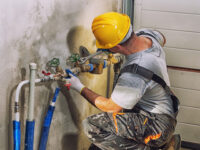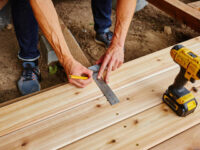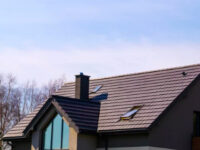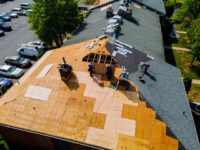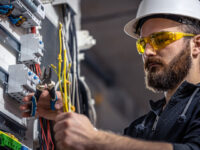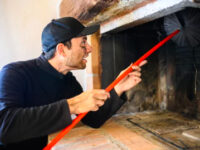How to Keep a Chimney Sweep Clean
Chimney Sweep Clean work systematically to clean fireplace chimneys. They might start inside the flue or from the roof, but their ultimate goal is to scrape the coating that has accumulated and built up on the chimney lining from several fires. The coating and debris will fall into the fireplace, where they can be swept up or vacuumed.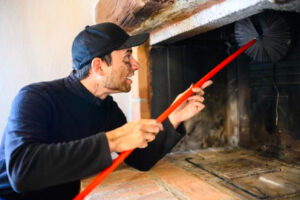
When you have a chimney sweep appointment scheduled, you can do a few things in advance to make the process easier for everyone involved. First, you should clear a space in front of the fireplace that’s a minimum of a meter and a half wide to allow room for the chimney sweep to maneuver their equipment. Also, moving any furniture or rugs near the fireplace is a good idea so they don’t get dirty or covered in ash and soot as the work is done.
Your chimney sweep will bring various equipment into your home for inspection and cleaning, including a shop vac to decrease soot levels and a dust collection mask. They’ll also use a 5ft polypropylene rod that resembles a giant bottle brush to clean the interior of your chimney. The chimney sweep will start from the top or bottom of the flue liner to remove soot, ash, and any debris that has built up inside your chimney and in the flue walls.
If you have an appliance with a closed flue, such as an oil or gas furnace, the chimney sweep will also vacuum out the interior of the stove pipe and clean any creosote that’s coating the flue walls. Having your fireplace and chimney swept annually is important because of the buildup that can lead to fire hazards or blockages.
The chimney sweep will also inspect the fireplace and the flue and may recommend repairs or maintenance items like a new chimney cap or liner. They’ll provide a detailed report of their findings and will give you an estimate before beginning any cleaning or repair work.
Chimney sweeps can also remove animal nests from the top of your chimney. These nests can be very hazardous when the animals are in their midst, and the chimney sweep will take care to remove them safely.
You should avoid using your fireplace 24 hours before your sweep’s arrival. The walls of your fireplace and chimney can still be hot even after the fire has been extinguished, so this is a good time to take advantage of other heating sources.
Chimneys are often located in a room used for other purposes and surrounded by furniture, carpets, and other decorations. Many homeowners are concerned that the chimney sweep may splatter soot and creosote all over their nice belongings when they come in for the cleaning process. Although modern chimney sweeps do a very thorough job of sheeting up the fireplace area, there is always a chance that some ash and debris will escape and land on nearby furniture. For this reason, it is a good idea to move any furniture or decorations close to the fireplace before your sweep’s arrival.
When your chimney sweep arrives, they will put a tarp around the firebox to protect your living space from accidental spills or splashes. They will also bring a dual HEPA filter vacuum to help keep dust levels down as they work inside your home. They will usually start either on the roof or inside the flue, depending on the needs of your chimney, and they will use a camera to assess the condition of your walls and ensure there are no obstructions or damage.
Your chimney sweep will need the fireplace to be cool for the inspection and cleaning process, so ensure you are not using it 24 hours before your appointment. Removing any logs or decorative items from the firebox is also a good idea, as they will be swept up and may become dislodged during the process.
Suppose you have priceless family photos or other decorative items on the mantel. In that case, moving them to a safe location is a good idea so they do not get damaged during the sweeping and inspection process. It would help if you also covered anything else on the mantel that could be easily scratched by soot, ash, or dust during the cleaning process.
Chimney sweeps must protect their health and safety when working above ground level. They must be prepared to stand for hours and may need to take regular breaks to avoid fatigue. Chimney sweeps also need to have the right tools for their job. They need brushes to clean soot and creosote from the flue walls, power vacuums for debris removal, chimney caps and spark arrestor installations to prevent fires. Specialized equipment to inspect and analyze chimneys.
Most chimneys require more than a basic sweeping. The National Fire Protection Association (NFPA) recommends that homeowners have their chimneys and fireplaces inspected and cleaned at least twice yearly. This is because a dirty chimney can lead to dangerous chimney fires that pose significant hazards to the household.
Wood that isn’t burned completely generates a byproduct known as creosote, which is carried up with the smoke and deposited on the chimney flue walls. Over time, creosote can build up until it becomes a tarry glaze that is incredibly difficult to remove. This thick coating is a major cause of chimney fires and can quickly spread to the rest of the home.
A chimney sweep’s responsibilities include:
- Removing creosote and other deposits.
- Assessing the condition of the chimney flue.
- Recommending repairs as necessary.
These services can be complex, and the chimney sweep must prepare the home in advance to ensure they can complete them safely and effectively.
During the chimney cleaning process, a lot of dust and other debris can fall on floors and furniture. The chimney sweep will put a drop cloth on the floor to catch any falling debris and minimize damage.
Chimney sweeps will also assess the structure for cracks, leaks, and other problems. They will need to use a ladder and rope to reach the chimney crown, which is located at the top of the chimney. The chimney may need a cap or liner replacement if it is in poor condition.
An experienced chimney sweeper will know how to adjust the speed of a power sweep brush head for the flue type and condition they are working on. Using the wrong speed can cause the brushes to damage the chimney walls.
Having your chimney swept regularly is essential. It helps prevent excessive creosote buildup, which can lead to a fire that threatens your home or carbon monoxide poisoning, as well as reduce the risk of fire damage and other problems caused by smoke or fumes escaping the chimney. According to the National Fire Protection Association, fireplaces and chimneys should be inspected and cleaned at least once yearly or more frequently if used often.
In addition to removing a layer of flammable, corrosive creosote, regular cleanings help eliminate potential pest infestations. Animals can nest inside chimneys clo,g flues, and cause structural issues that may require expensive repairs. Hiring a qualified, certified chimney sweep is the best way to ensure your chimney is safe for you and your family.
If you have pets, have them in another room while the chimney sweep works. They might be disturbed by the noise of the equipment or by having a stranger in their home, and pets are also at risk of breathing in smoke, soot, and other chemicals emitted during this process.
Before the chimney sweep arrives, ensure that all embers have completely burned out and that your fireplace is cool. It’s a good idea to spread a drop cloth or towel in front of the fireplace to keep any ash and debris from spilling on your floor. In addition, you should roll up any rugs in the area to protect them from soot and ash.
Once the chimney sweep finishes the inspection and cleaning, you will receive a written report outlining your chimney’s condition, including any recommendations for repairs or maintenance. In addition to noting any signs of structural deterioration like cracking bricks, the report will detail the amount and type of accumulating creosote. It will also list any other issues, such as white stains or efflorescence, that indicate the presence of moisture.
A professional chimney sweep can also recommend safety measures, such as a fireplace insert, which reduces creosote buildup and makes removing it easier. He or she can also advise you on the best way to use your fireplace safely, such as adding a few aspen logs to the end of each fire to help it burn quickly and cleanly.

